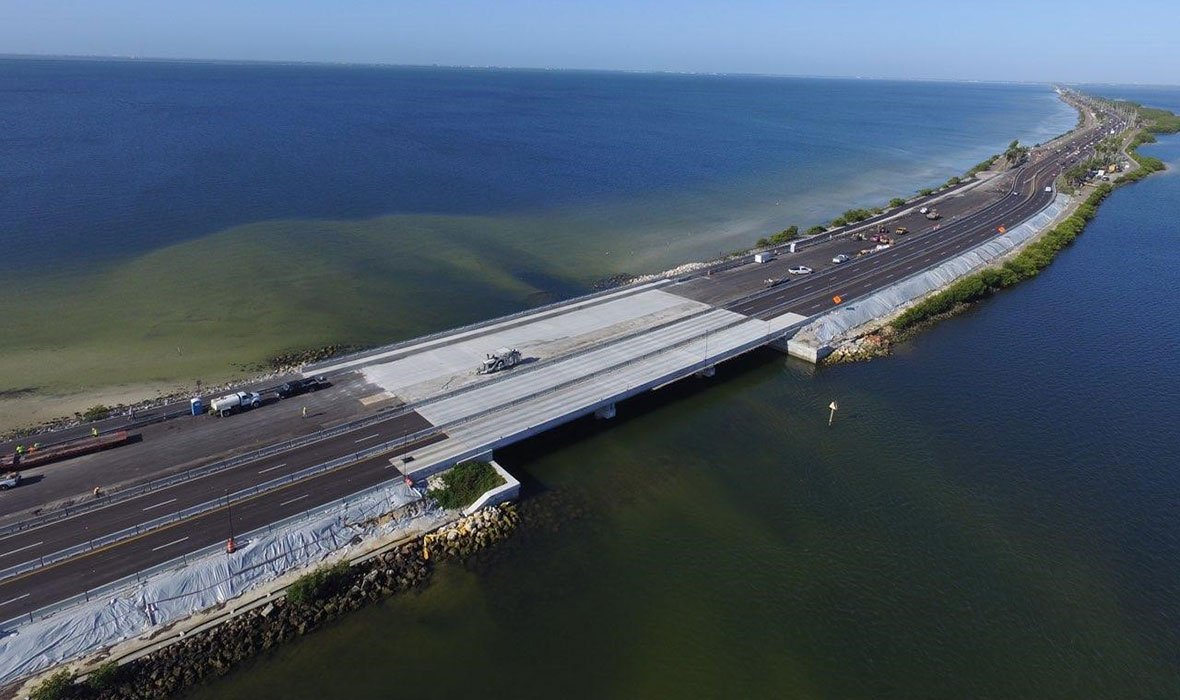With the shutdown behind us, federal agencies and Congress are shifting back into gear and...

Old Tampa Bay Water Quality Improvements
Since the construction of the Courtney Campbell Causeway in the 1930s, water quality problems and seagrass losses have persisted in the northeastern portion of Old Tampa Bay requiring an innovative approach to restoring the bay while keeping the roadway in service.
Why does this project matter?
Seagrass meadows, like those found in Tampa Bay, provide a number of positive ecosystem effects, including improved water quality and essential fish habitat. The Florida Department of Transportation (FDOT) recognized the need to turn the fate of Old Tampa Bay around and restore the water quality to salinity levels from the 1930s by designing a 200-foot wide bridge to replace the causeway.
What is ESA doing to help?
A more traditional approach to permitting would not have identified or addressed the actual problem with the ecology and water quality of this portion of Old Tampa Bay. Through field work and testing of hypotheses, ESA identified a cost-effective approach.
Aerial photographs in the portion of Old Tampa Bay affected by the causeway revealed that impacts were mostly restricted to areas that had lost their historical tidal connections to the bay’s open waters. These findings suggested that the construction of the causeway changed the environment so that seagrass could not grow in that area, even while adjacent waters supported extensive meadows of these underwater plants. Initial field studies confirmed the hypothesis that the causeway had resulted in abnormally low and highly variable salinities.
The preliminary study concluded that modifying the causeway to allow for the restoration of lost historical tidal influences in northeastern Old Tampa Bay would likely result in a greater ecological response than by treating stormwater runoff with traditional treatment systems. The proposed project was also consistent with regulatory language that allows for alternative methods to address water quality issues, as long as the benefit would be equivalent or greater than traditional stormwater treatment systems.
Six years after the initial study, FDOT designed, permitted, and completed the construction of a bridge underneath that portion of the causeway. Water circulation patterns have improved to a level that is not only meeting regulatory thresholds, but is also noticeable to the public.
Connect with our team
"ESA identified, designed, and secured permitting for an innovative environmental solution that saved tens of millions of dollars over more traditional approaches."
Details
Location Tampa Bay, Florida
Services
Agency Consultation & Coordination
Biological Resources
Coastal Restoration
Coastal Zone Engineering & Management
Environmental Compliance
Geospatial
National Environmental Policy Act (NEPA)
Restoration
Water Quality
Notable
2019 Natural Environment Future of the Region Award, Tampa Bay Regional Planning Council

Similar Projects
News & Ideas
The following speech was delivered on September 25, 2025 in Washington, DC, at the Road...
ESA’s team of federal permitting and National Environmental Policy Act (NEPA) experts will recap the most...
Join ESA’s team of federal permitting and National Environmental Policy Act (NEPA) experts as they...
It’s been weeks since the event, but I’m still reflecting on the 2024 Mobility 21...
On July 22, the U.S. Environmental Protection Agency (EPA) awarded a $500 million grant to...







